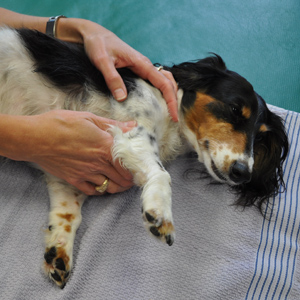Massage, range of motion and stretching
 Massage:
Massage:
Different massage techniques can provide treatment for a variety of conditions. Massage is most frequently utilized to help relieve muscle tension and the resulting muscle pain. It increases blood flow which improves the oxygen supply and removal of waste products. Massage also increases lymphatic circulation. Massage can be used to prepare muscles before exercise/training and afterward activity to accelerate muscle recovery. Deeper massage techniques can help mobilize adhesions and release muscle knots or trigger points. For neurologic patients, massage can also help improve muscle tone and sensory awareness. Massage also promotes mental and physical relaxation.
Range of motion:
Joint immobilization from either lack of use or splinting/casting causes reduced range of motion. It may require up to 8-12 weeks of remobilization for changes to reverse but rehabilitation may help shorten this time. Performing passive range of motion exercise is an important part of early rehab after orthopedic surgery. To perform range of motion with a pet, it is helpful to have the patient lay on its side with the affected limb up. Support the entire limb to avoid any undue stress to the involved joint. Slowly flex the joint while maintaining the other joints in a neutral position. Continue to flex until the patient shows initial discomfort and then slowly extend the joint until initial discomfort. You can also perform range of motion through functional patterns by moving multiple joints simultaneously. Joints do not go through a complete range of motion during normal walking and trotting. We use therapeutic exercises to encourage a more complete range of motion.
Stretching:
Stretching is often performed in conjunction with range of motion to improve flexibility of the joints and extensibility of periarticular tissues, muscles, and tendons. Static stretching is when a stretch is held for 15-30 seconds. Stretching several times a week may increase flexibility in patients with stiffness. After flexibility improves, stretching may be reduced. Prolonged mechanical stretching would involve a stretch prolonged for 20 minutes up to several hours. Splints or other devices may be applied to provide prolonged stretching. Prolonged stretching is not as frequently used but can be helpful in some cases of muscle contracture or scarring. Heating tendons prior to stretching may result in less tissue damage and greater elongation.
